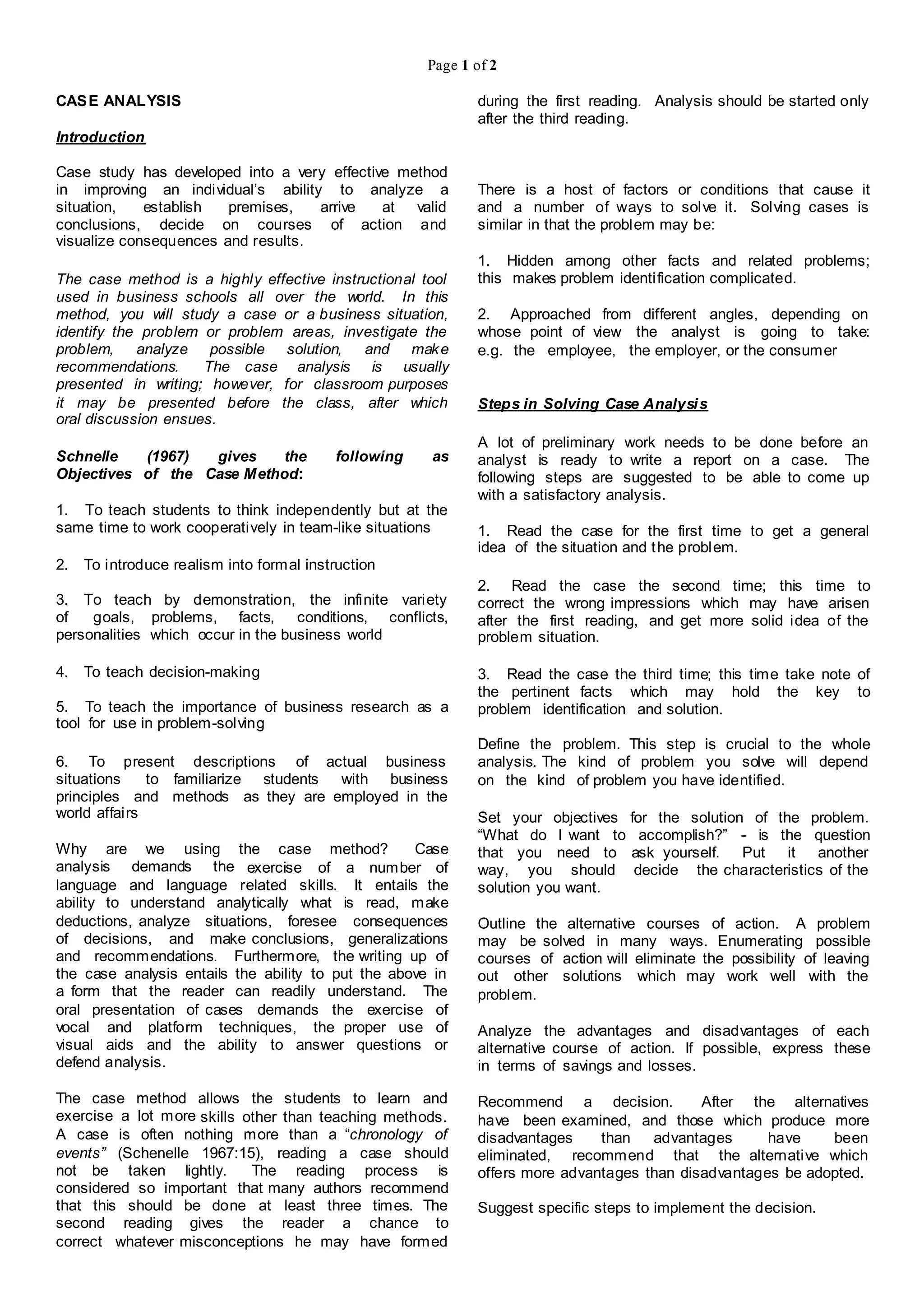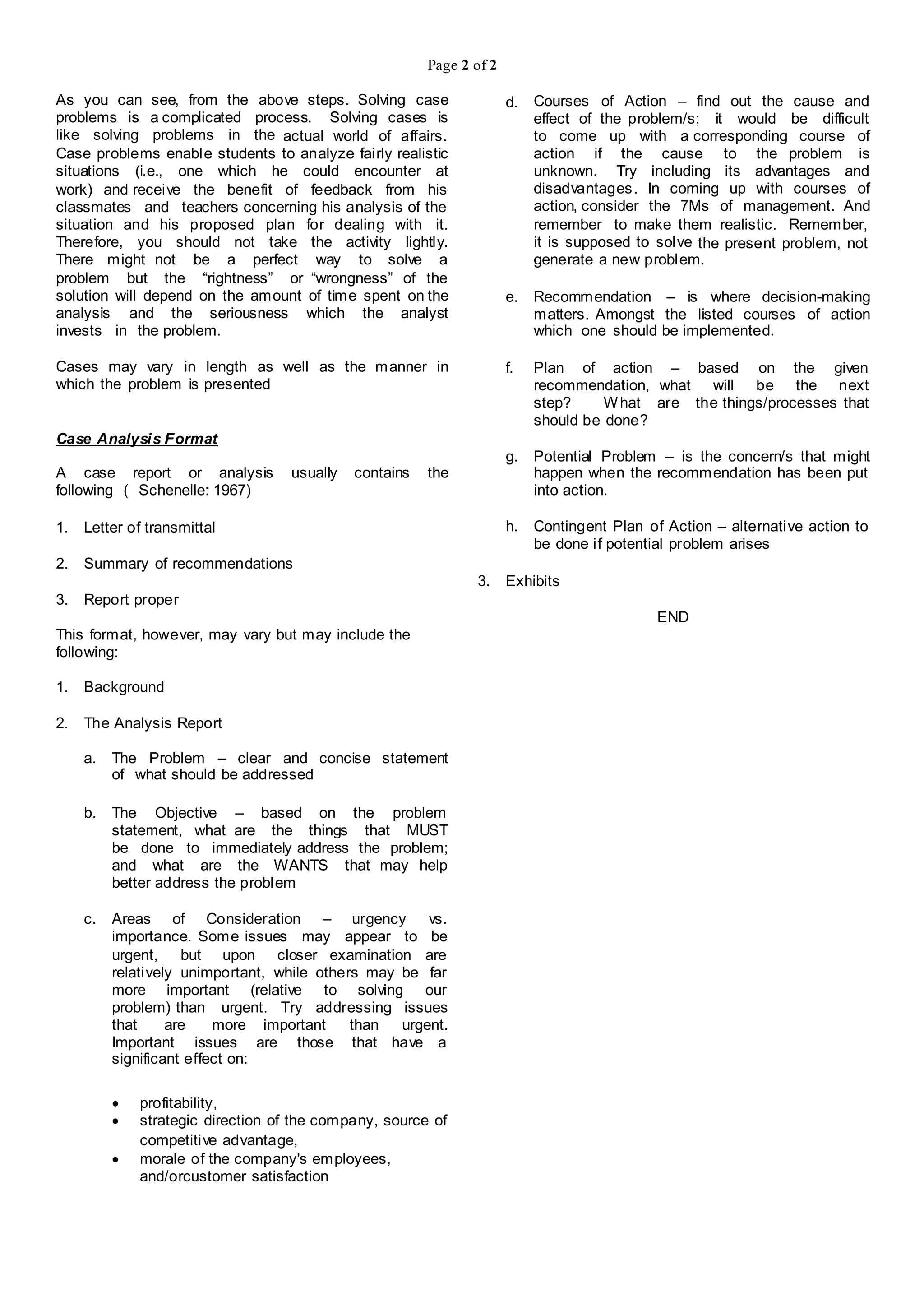The document discusses the case method approach to teaching and learning. It describes case method as using real business situations to help students develop analytical skills like problem identification, solution development, and decision making. The case method involves studying a case, identifying problems, investigating issues, analyzing solutions, and making recommendations. It aims to teach independent and cooperative thinking, introduce realism, demonstrate business issues, teach research and decision making. Analyzing cases strengthens various skills like understanding, deduction, evaluating consequences, and presenting conclusions. The steps outlined for case analysis include multiple readings to identify key facts and problems, defining the problem, setting objectives, outlining alternatives, evaluating pros and cons of options, and recommending and planning a decision.

